Just because it’s fake doesn’t mean I don’t feel it.
—Girls, Season 3, Episode 3
Fredric Jameson once noted that superficiality was the “supreme formal feature” of late twentieth century culture.1 Whether it was in the philosophy of Foucault or historicist architecture, in the photography of Warhol or the nostalgia film, he suggested, an “exhilaration of … surfaces” had cut short the “hermeneutic gesture,” the reading of a physical or dramatic expression as a “clue or a symptom for … reality,” or as the “outward manifestation of an inward feeling.”2 Indeed, at the time, Jameson’s suspicions of this “new depthlessness,” as he called the development, were confirmed everywhere: Derrida discussed the withdrawal of the referent, Baudrillard lamented the waning of the real, while Deleuze celebrated the simulacrum. In art, too, superficiality and evidence of the “new depthlessness” abounded. Indeed, art critic Beral Madra even called this depthless abundance an “obsession”: the Wachowski brothers’ The Matrix and Weir’s The Truman Show plotted simulations, the photos of Thomas Demand and Jeff Wall portrayed hyperreal scenarios where representation and reality were indistinguishable (that is to say, where they took place on the same ontological plane), while novelists Brett Easton Ellis and Michel Houellebecq described the shallowness of the human subject.3 Like the Histories of ideology and the social before it, the History of depth, of the behind or beyond, too, it seemed, had come to an end—or at least was cut short.
Writing a decade into the twenty-first century, this History appears to have returned. In philosophy and art alike, notions of the behind and the beyond, the beneath and the inside, have reemerged. The speculative realists, for instance, think beyond the surface of the epistemological, while artists like Mark Leckey, Ed Atkins, and Ian Cheng make discoveries within the simulacral, uncovering unintended glitches or unexpected traces of other (hyper)realities: hereditary deficiencies in digital DNA, intertextual features that come to light through another focus, immaterial realities as blueprints for material possibilities. Others, such as the artists-cum-activists Hans Kalliwoda and Jonas Staal, or novelists Adam Thirlwell and Miranda July, study the simulation not as a model of/for reality but as a diagram of possibilities, creating self-enclosed scenarios informed by reality but enacted in isolation from it, whose conclusions offer radical alternatives. Importantly, these philosophers, artists, and writers, each in their own distinct way, do not resuscitate depth as much as they resurrect its spirit. They understand that the depth Jameson referred to—dialectics, psychoanalysis, existentialism—has been flattened, or hollowed out. What they create instead are personal, alternative visions of depth, visions they invite us to share. Just as the Renaissance painters developed depth-models that differed from those structuring twelfth-century painting, replacing the metaphorical beyond with the perspectival behind, many artists today conceive of depth in another sense than their twentieth century predecessors. Many contemporary thinkers and artists leave the dead corpus of depth untouched, whilst trying to reanimate its ghost.
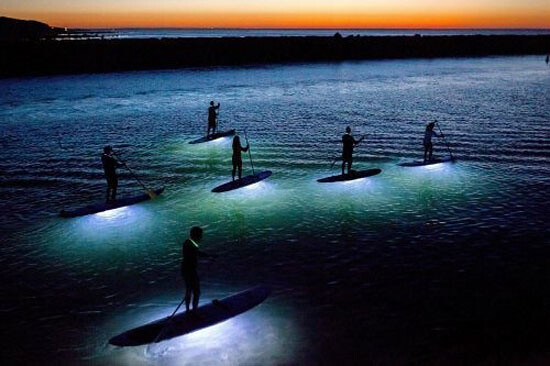

The New Depthlessness
Over the years, Fredric Jameson’s notion of the new depthlessness has occasionally been understood to refer to a focus on, or proliferation of, surfaces. As far as I can tell, however, Jameson’s depthlessness denoted less a quantitative development than a qualitative one. His point was not necessarily that there was more interest in surfaces in the 1980s—than in, say, the 1920s, or the mid-eighteenth century, or the Renaissance period, though there may well have been. Jameson’s contribution to the history of surface attention was rather that by 1991, for instance, the interest was in the surface itself rather than the substance behind or below it—fascination and practice hyperfocused on the glass more than the display, the giftwrapping more than the present. Indeed, what Jameson observed, and what disturbed him, was that the very idea that there was a behind, a present, had seemingly been abandoned.
In Postmodernism, or, the Cultural Logic of Late Capitalism, he theorized the new depthlessness as the repudiation—sometimes called “discourse,” sometimes the “death of the author,” often “poststructuralism,” now voiced by Foucault then by Derrida, then Baudrillard—of five distinct yet related models of signification: the dialectical model of appearance and essence, in which each material appearance is taken to be the manifestation of a providence, will, or an ideal essence; the existentialist model of inauthenticity and authenticity, in which behavior mirrors a self; the hermeneutic model of outside and inside, in which physical expressions are perceived as the manifestations of inward feelings; the psychoanalytic model of manifest and latent, in which bodily gestures are the symptoms of psychological states; and finally the semiotic model of signifier and signified, in which a sign is read as a signification of a mental concept. Other flattenings pertained to affect, through desubjectivization, and history, through pastiche. In other words, when Jameson spoke about depthlessness, what he was talking about was not simply wrapping paper but a missing present; not a container without contents but a can of yogurt past its expiration date: whatever was once inside, it was no longer ingestible.4 The new depthlessness denoted not a coincidence but a consequence, the effect of years of—depending on the discipline—obstructing, flattening, cutting off, or hollowing out.
For Jameson the history of art was exemplary of this development. Whereas modern art communicated a reality behind it, postmodern art reflected no such externality; or if it did reflect anything, it was only the reality in front of it, the reality of the frame, the white cube, and the spectator. Vincent van Gogh’s A Pair of Boots (1887), Jameson wrote, expressed both, through its “hallucinatory” use of color, the artist’s “realm of the senses” and, through its use of “raw materials,” a world “of agricultural misery, of stark rural poverty, … backbreaking peasant toil, a world reduced to its most brutal and menaced, primitive marginalized state.”5 The painting, in other words,conveyed individual ideas, sensibilities, and social realities which continued beyond its borders. In contrast, Andy Warhol’s Diamond Dust Shoes (1980) communicated neither an authorial voice, nor a personal attitude or affect, nor a sense of the world it supposedly represented. The black-and-white photograph, with its shiny, isolated aesthetic, Jameson suggested, could allude to glamour magazines just as well as to a memory of the artist’s mother, to shoes left over from Auschwitz or the remains of a dance hall fire. If Van Gogh’s painting of peasant shoes pulled the viewer into another world of poverty and misery, Warhol’s photo of pumps pushed the spectator out back into his own.6 As Warhol himself is alleged to have said: “If you want to know all about Andy Warhol, just look at the surface: of my paintings and films and me, and there I am. There’s nothing behind it.”7
Jameson, through his discussion of Warhol but also in other case studies concerned with cinema, literature, philosophy, and architecture, introduced the notion of a new depthlessness as an exemplary characteristic of late twentieth century culture, not as an exhaustive criterion (presumably in line with his understanding of postmodernism as a structure of feeling allowing for the coexistence of contradictory registers and styles as opposed to a paradigm or regime). He never suggested that depthlessness was, or would be, a feature of all art of the eighties and nineties. It is certainly true, however, that depthlessness was the “supreme formal feature,” as Jameson put it, in that it was a signifier of a sensibility that was more manifest than others. Just think back to the hit music of the time, to the hedonism of the Venga Boys or the desperation of Nirvana; to the bestselling books, like Brett Easton Ellis’s American Psycho (1991), with its simulacral protagonist Patrick Bateman, “an idea, … some kind of abstraction but … no real [person],” in whose eyes the reader could gaze, whose hands could be shaken, and whose flesh could be felt, but who was “simply … not there”8; or the popularity of artists like the YBAs and Jeff Koons, whose (in)famous Rabbit from 1986 reflected no reality except the one it was in. Recall, also, the ongoing discussions originating at the time about the End of History, proclaiming the decline of viable alternatives in general. Depthlessness may not have been everyone’s cup of tea, but, sadly, it was definitely the best-selling beverage at Starbucks.
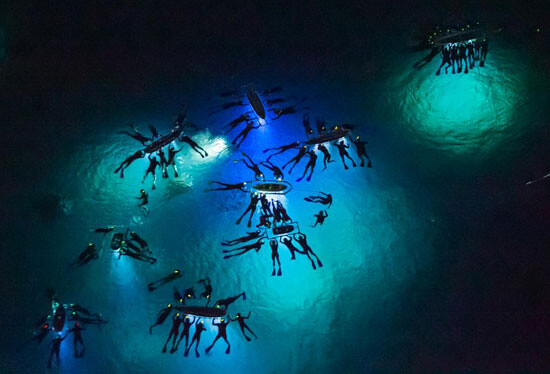

The New Depthiness
In his slim volume of essays The Barbarians, the Italian novelist Alessandro Baricco distinguishes between two experiential registers that in many senses mirror, and make manifest, Jameson’s discussion of depth and depthlessness: diving and surfing. The diver, Baricco suggests, looks for meaning in the depths of the ocean. He delves into the water, sinking deeper and deeper in search of a particular coral, fish, or sea monster. This is the person, writes Baricco, who reads, who perseveres reading Proust or Joyce—that is to say, modernists, to use the vocabulary of Jameson. The surfer, “the horizontal man,”9 on the contrary, looks for meaning on the surface, more precisely in the series of waves that form the surface—one after the other after the other, now left, now right, higher and lower. As Baricco puts it:
If you believe that meaning comes in sequences and takes the form of a trajectory through a number of different points, then what you really care about is movement: the real possibility to move from one point to another fast enough to prevent the overall shape from vanishing. Now what is the source of this movement, and what keeps it going? Your curiosity, of course, and your desire for experience. But these aren’t enough, believe me. This movement is also propelled by the points through which it passes … [The surfer] has a chance to build real sequences of experience only if at each stop along his journey he gets another push. Still, they’re not really stops, but systems of passage that generate acceleration.10
Unsurprisingly, if the diver is the person who reads Proust, Baricco writes, the surfer is the person browsing the internet.
The reason I introduce Baricco’s metaphors here, kitschy as they are, is twofold.11 The first is that these metaphors concretize Jameson’s abstract notions of depth, especially depthlessness, giving hands and feet to these amorphous bodies of thought. To say that something is depthless, after all, is not the same as suggesting that something is superficial. The first term acknowledges the possibility of depth whilst negating its actuality, whereas the second disavows it: though the make-up of the word “surface” suggests layers—the “sur-” and the “face”—it does not necessarily imply distance. By invoking the figure of the surfer, someone whose concern is not only to stand on the water but to avoid falling into it, going under, this duality is made manifest: to speak about depthlessness is to speak about the extinction of depth, not its nonexistence.
More importantly, by introducing the figure of the surfer, Baricco develops Jameson’s notion of depthlessness from an experiential register to a modality of engagement. In order to stay above water, after all, the surfer needs to develop the skills that keep him on his board. One of these skills, one similar to Deleuze and Guattari’s concept of the rhizome, is to perceive the ocean as a “trajectory” rather than either a territory (implying a mapping) or a telos (suggesting direction). (Indeed, Deleuze himself introduces the figure of the surfer in his “Postscript on the Societies of Control.”) Here the surfer stays on his board by choosing one wave after the other, regardless of the corals he scratches with the tip of his board or the direction the waves take him in. He literally lets the waves carry him—he “lives in the moment.” The second skill is the ability to constantly keep moving. If the surfer slows down or is momentarily stopped “by the temptation to analyze,” as Baricco puts it, he sinks. He must progress, advance, experiencing each wave not on its own terms but as the medium, the catalyst for the next encounter, which is to say that each experience is experienced not in and of itself but in anticipation of the next experience, the next wave. What Baricco suggests, thus, is that the experiential registers of depth and depthlessness prescribe different modes of engagement: in the former you focus on one point in particular whilst in the latter you let your eyes scan over the surface; in the first you look for the special, in the second for the spectacular: the next wave, the next thrill. Though Baricco’s metaphor of the surfer is both limiting and reductive and certainly does not define all art from the eighties and nineties, it manages to put into words a sentiment often shared between certain artistic traditions and their audiences: the act of looking for a hint, not of what lies beneath, but rather of what lies ahead of us—the spectacle, the thrill, the controversy, the next wave we can ride and then the next, and the next.To return to Jameson’s case studies, Van Gogh’s A Pair of Boots implies another mode of engagement than Warhol’s Diamond Dust Shoes: in the former we are invited to look for traces of an experience; in the latter what we are left to see are points for discussion.
While cognizant of the limitations of this metaphorical vernacular, I would nonetheless like to propose that in the past decade, a third modality has taken hold of the artistic imagination: that of the snorkeler. Bear with me. Whereas the diver moves towards a shipwreck or a coral reef in the depths of the ocean, and the surfer moves with the flow of the waves, the snorkeler swims toward a school of fish whilst drifting with the surface currents. Importantly, the snorkeler imagines depth without experiencing it. “Where might that fish be swimming to?” he wonders. Or perhaps he thinks, “What might be below that rock?” He may follow the fish’s direction, left, then right, then left again. But he will not, and often cannot, dive downwards; or if he does, then it is only for as long as his lungs allow. This is to say: for the snorkeler, depth both exists, positively, in theory, and does not exist, in practice, since he does not, and cannot, reach it.
When I refer to the “new depthiness,” I am thinking of a snorkeler intuiting depth, imagining it—perceiving it without encountering it. If Jameson’s term “new depthlessness” points to the logical and/or empirical repudiation of ideological, historical, hermeneutic, existentialist, psychoanalytic, affective, and semiotic depth, then the phrase “new depthiness” indicates the performative reappraisal of these depths. I use the term “performative” here above all in Judith Butler’s sense of the word. Just as Butler writes that the soul is not what produces our behavior but is, on the contrary, what is produced by our behavior—in other words,not inside the body but on and around it,a surface effect—depth is not excavated but applied, not discovered but delivered.12 Indeed, if the “gendered body has no ontological status apart from the various acts which constitute its reality,” depth, too, exists exclusively in its enactment.13 Depth, at least post-Jameson, will always be a “depthing”—a making, actual or virtual, of depth. In this sense, depthiness combines the epistemological reality of depthlessness with the performative possibility of depth.
The term “depthiness” is a reference to both, as will be clear by now, Jameson’s notion of depthlessness and Stephen Colbert’s joke about “truthiness.” The comedian invented the term to criticize politicians’ tendency to bend the facts to fit their program. As he explained during his controversial speech at the White House Correspondents’ Dinner in 2006, where he took aim at then president George W. Bush:
Do you know that you have more nerve endings in your gut than you have in your head? You can look it up. And now some of you are going to say: I did look it up and that’s not true. That’s because you looked it up in a book. Next time look it up in your gut. My gut tells me that’s how our nervous system works … I give people the truth unfiltered by rational arguments.14
Colbert defines truthiness as the truth of the gut, unperturbed by empirical research or rational thought. It is a truth that feels true to me, or to you, but whose validity is not necessarily confirmed by science.
The similarity between Colbert’s concept of truthiness and the notion of depthiness proposed here is that both describe a contradictio in terminis, or rather, perhaps, a recontextualization of terms. “Truthiness” expresses the production of a “truth” according to emotion instead of empiricism; “depthiness” articulates the creation of “depth” as a performative act as opposed to an epistemological quality. The difference between the two terms, however, is that whereas the former takes the affirmative category of truth as its reference, which suggests that there is a truth even if the suffix “–ness” implies that it may not apply to what is denoted; the latter adapts the negative label “depthlessness,” which by contrast suggests that there is no depth, though here the suffix intimates that it may be perceived. Indeed, in this sense, it would have been more accurate to contrast truthiness with the equivalent of “truthlessiness”: “depthlessiness.” Truthiness puts the truth into question; depthiness raises doubts about depthlessness. Truthiness abandons the reality of truth as a legitimate register of signification; depthiness restores the possibility of depth as a viable modality for making meaning.
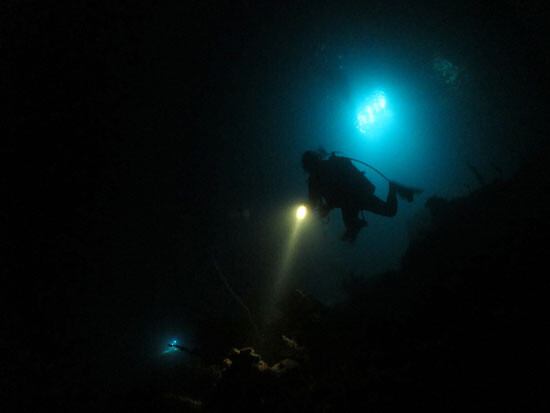

“Just because it’s fake doesn’t mean I don’t feel it”
The premise of this essay is that over the course of the past ten years or so, the (sur)face of art has changed to resemble not the white caps of the surfer but the air pipe, or the bubbles, of the snorkeler. In stark contrast with the surface of Warhol’s Diamond Dust Shoes, which articulated no clues about the affections, localities, or histories behind it,the surfaces of photographs, sculptures, and drawings by a younger generation of artists once again hint at depth. As I suggested above, this is not the empirical or logical depth of the behind, but a performative depth of what one may call, in the absence of a more appropriate terminology, the “without.” The without is an approximation of depth which acknowledges that the surface may well be depthless,while simultaneously suggesting an outside of it nonetheless. Van Gogh’s surfaces were marked with traces of a behind. The surface of Warhol covered these traces up. Contemporary surfaces, I would say, haven’t uncovered them, exactly, but instead simulate them.
To be sure, simulation is by no means a novel concept. Quite the contrary. If depthlessness was the “supreme formal feature” of late twentieth century art and culture, then it is safe to say that simulation, the copy without an original, was its theoretical equivalent.15 Throughout the eighties and nineties especially, simulation was a recurrent trope in exhibitions, films, and philosophical seminars alike. One can think here indeed of the proliferation of Warhol, or of a blockbuster show like Endgame: Reference and Simulation in Recent Painting and Sculpture at the ICA in Boston in 1986, but also of Ruff’s early Portraits (1981–85), the photographs of Demand, the paintings of Sherrie Levine, the videos of Sturtevant, or Koons’s Rabbit, many of which developed scenarios whose veracity and origins were indiscernible. Even a mass-market film like The Truman Show (1999), which portrayed a man who unknowingly performs a part in a reality show, followed and expanded the simulation trend. Around this time, the philosophy of Jean Baudrillard ever more popularly convinced us that the real was an effect of the code. The Gulf War, he wrote to much controversy, did not happen. Baudrillard did not mean to say that there weren’t two parties warring, at the price of international stability, the environment, and human suffering. His argument was that each of these costs—financial, political, public relational, human, and ecological (presumably in that order)—had been calculated beforehand by computers, through insurance software and virtual game plays. When the war took place, therefore, it played out, both in reality and in its representation in the media, a script that had already been written. The point, for many of these artists, filmmakers, and thinkers, was to demonstrate that there was no reality, no truth, no authenticity outside of the image or the model—and no humanity inside it. To emphasize this, many works at the time—perhaps most memorably the film The Matrix (1999)—visually equated simulation with computers and algorithms and especially with digital codes—with ones and zeros, languages themselves no longer referring to any realities outside of them, the final stage in a history of depthlessness.
Many contemporary artists, however, re-territorialize these languages of simulation to suggest not the final stage in a history of depthlessness but the first one in another chronicle of depthiness. They jump from their surfboards into the water, a snorkeling mask in hand. They cannot swim deep, but they can perceive depth. Take the Irish artist Kate Holton. Holton draws out the surprising and often unexplained similarities between the aesthetics of our networked (digital) civilization and nature. Her Constellations series resembles starscapes: bright white dots, in patterns pursuing a logic of their own, illuminate the black space around them.16 In reality, however, the paint drawings depict satellite images of earth—the American Midwest and northern Germany. In another series of drawings, mold resembles road maps with long thin lines traveling decisively from spot to spot.
In one sense, Holton’s images are simulations: they are copies of photographs which only by extension refer to a reality outside of them. Yet by drawing out the lines and dots on these photos, tracing by hand the patterns that culture and nature share, feeling out the cognitively inexplicable mathematical codes that they have in common, she integrates them into her own human experience. If Warhol’s aim was to demonstrate that there was no reality outside of the image and no humanity inside of it, Holton shows that it may be precisely by forcefully reinserting humanity inside of the image (a frame, a point of view, a bodily gesture) that the possibility of an outside is restored.
There are several other artists whose works—drawings, sculptures, drawn sculptures, and otherwise—meticulously infuse humanity into the simulation, and as a consequence reintroduce the possibility of an outside. For example, Ane Mette Hol handcrafts three-dimensional simulations of everyday objects. Oftentimes the Norwegian artist simulates objects that people overlook, ignore, or discard, like cardboard wrappings, printing paper, and dust. In one particularly poignant piece called Untitled (Artificial Light) (2013), she uses a pencil to meticulously copy the automatized, mass-printed lettering that marks the cardboard wrapping of a TL light—the brand, the type, the voltage, and so forth. To spend such time and effort on something as insignificant as a copy of the wrapping of a TL light spells out an act of immense empathy. In these works, much unlike the sculptures of Koons, simulation is not what preempts history, locality, or personal affect, but precisely what returns it.
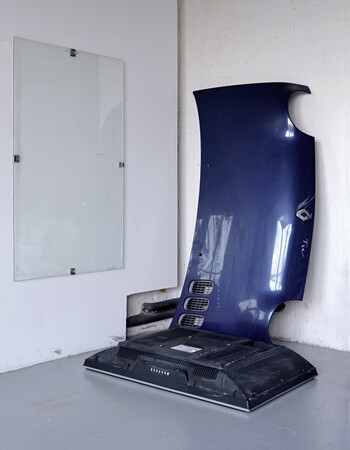

I am also reminded here of recent minimalist sculptures by Monika Stricker, who smears buttermilk on modes of display ranging from spick-and-span glass vitrines and windows to shiny car hoods and rims. The act of applying buttermilk to these screens has the effect of mattening, of hiding them and making what they communicate—artworks, vases, the specific identity of a car—less visible. At the same time, this action is precisely what renders these materials themselves more visible. By spraying a car bonnet, Stricker defunctionalizes it—it no longer communicates that the car it was a part of is fast, safe, and sexy. But it also opens it up for other, yet-to-be-determined uses, many of which will be uninteresting to us humans. Stricker here visualizes optical noise, makes visible the cacophony of images we normally sound out, creating the potential of depth in all directions. She sees not just the waves but also the coral reefs that may have precipitated the waves, or the reefs that are scratched by the surfboard. Indeed, Stricker does not stand on the board as much as she floats just beneath it, taking in a whole ecology of twenty-first century civilization.
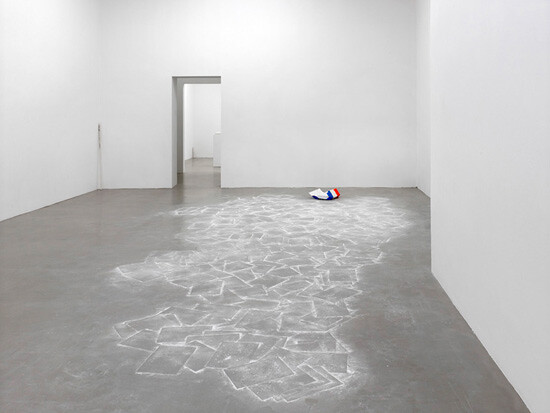

Holten, Hol, and Stricker pull down to a human, bodily level the abstract, often immaterialized processes behind the mathematical codes and algorithms that calculate the constellations of stars, that shape mass-produced objects lacking in exchange value, that determine invisible modes of display. Their drawings and sculptures are depthless in that they do not refer to a reality behind them; but they do intimate a reality of affection before, or without, them, even if, as is the case with Stricker’s buttermilked bonnets, this is a reality of disaffection. In the traces of the chalk dots, the lines of the pencil lettering, and the sprayed milk, a reality of empathy, of caring for and participating in, becomes visible and sensible. These artists are snorkeling, feeling the wind on their backs while their eyes are pointed downwards. Indeed, what they make us see most of all, perhaps, is their backs, suggesting that though the surface itself may seem depthless, their efforts into it are not, indicating another realm of signification without.
In the sculptures and installations of Serbian artist Aleksandra Domanović, this depth of a without is restored in another fashion. Usually associated with the post-internet art movement, Domanović’s work is often discussed in terms of recontextualization: of, for example,the relocation of the virtual to the physical, the Communist to the capitalist, East to West, the mechanical to the human, and so forth. Her recent exhibition Things to Come at the Gallery of Modern Art in Glasgow (2014) can be seen in this light, though it will not be the one I will shine on it. Domanović created a series of seven large-scale sculptural prints on transparent foil, depicting objects from science fiction films like Blade Runner (1982), Gravity (2013), and Alien (1979). The prints were modeled after 3-D models of objects used in the films; the transparent foil was intended to invoke celluloid. The artist installed the printed foils one after the other in straight rows so that visitors had no choice but to walk alongside each slide before turning to walk back along the next. Walking the entire length of the space in this way, viewers always saw the backs of the previous slide while seeing the next one set against the background of all the future slides.
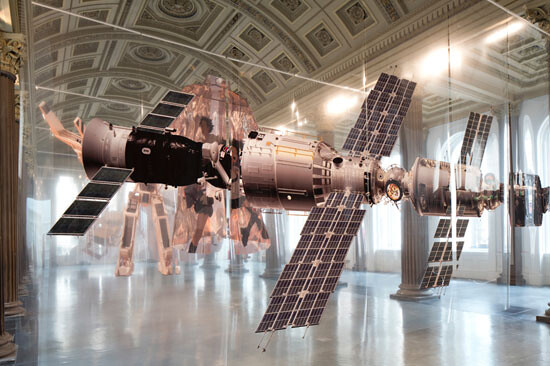

The point of the show was to reflect upon the history of science fiction film, foregrounding the limited role women have thus far been allowed to play in the genre—mothers, love interests, but rarely warriors or time travelers. Domanović drew attention, through the foils, to the unequal history of animation: women were colored into the celluloid but were not allowed to draw the lines. Her prints were in many respects reminiscent of Sherman’s photographs, except for one detail: organized in rows that both discouraged physical progress while stimulating visual passage, designating a path but allowing one to stray, Domanović’s prints pulled visitors into the peepshow, requiring them to physically experience the history of women in sci-fi; Sherman’s photos, by contrast, push viewers away, berating them for still looking. The distinction I intend here does not concern which strategy is better, or which aesthetic principle is worse. Both these strategies and principles are among the most powerful I have seen. What sets them apart, however, is their understanding of the relationship between the image and the outside: the first creates a depth within the simulation that points us to an outside, while the second does the opposite. If Holten, Hol, and Stricker show us their backs, in Domanović’s performance of depth we see bubbles—bubbles in whose images a depth without is mirrored. She asks us not to look at her looking at the surface, or even at her back; she asks us to look with her, to join her in her virtual swim just below the surface.
These artists are not the only “snorkelers,” of course. For further instances of performative depth—indeed, of depthiness—see Mark Leckey’s solo exhibition at Wiels in Brussels, or Pierre Huyghe’s retrospective at Palais de Tokyo in Paris, or Andy Holden’s show MI!MS at the Zabludowicz in London, or Ed Atkins at the Stoschek Collection in Dusseldorf, or the oeuvre of Ian Cheng, or Ralf Brög, or Oscar Santillan, or Anne Pöhlmann, or Jonas Staal, or Hans Kalliwoda, or Paula Doepfner, and so on and so forth. The list is long, much longer than I could possibly outline here.
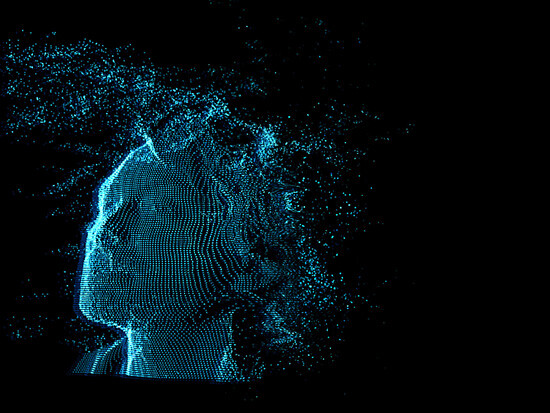

When I was growing up, in the mid-nineties and the early 2000s, I listened to Radiohead. On “There, There,” they sang, “Just because you feel it, doesn’t mean it’s there.”
A year or so ago, while watching the television show Girls (episode 3 from the third season), I was struck by a sentence that was at once reminiscent and completely different from that line from the early 2000s. “Just because it’s fake, doesn’t mean I don’t feel it.” The line from the Radiohead song that described our world as a hall of mirrors calls to mind Jameson’s understanding of depthlessness as the last stage in a particular history of a particular flattening. But what the line from Girls hints at is that, just maybe, we are seeing the first stage in another history of another kind of deepening, one whose empirical reality lies above the surface even if its performative register floats just below it: depthiness.
Frederic Jameson, Postmodernism, or, the Cultural Logic of Late Capitalism (Durham: Duke University Press, 1992), 9.
Ibid., 33, 8, 12.
Beral Madra, “Dark rooms and national pavilions,” Third Text vol. 15, no. 57 (2001): 102.
Jameson, Postmodernism, 12.
Ibid, 7.
Ibid, 8.
Quoted in Robert Williams, Art Theory: A Historical Introduction, 2nd ed. (Oxford: Wiley-Blackwell, 2009), 241.
Bret Easton Ellis, American Psycho (New York: Vintage, 1991), 376–77.
Alessandro Barrico, The Barbarians: An Essay on the Mutation of Culture, trans. Stephen Sartarelli (New York: Rizzoli International Publications, 2014), 111.
Ibid, 118.
A value judgment with which I imagine the author, judging from his self-depreciating Introduction, would be the first to agree.
Judith Butler, Gender Trouble: Feminism and the Subversion of Identity (New York: Routledge, 1990), 135. I use the term “performative” here also with a nod to Raoul Eshelman’s canonical conceptualization of “performatism.” One of the first thinkers to develop a cohesive critical vocabulary for talking about post-modernism to refer to the creation of a frame (of mind, of painting, of theater) within which something can be true, wholesome, irreducible, and impervious to deconstruction, while outside of that frame, this something isn’t, or cannot be, true, wholesome, or irreducible, let alone impervious to deconstruction. Another phrase he uses to describe this is “willful self-deceit”: for a moment, you cheat yourself into believing in a reality that you know does not exist. Though I am not sure whether the below artists perform depth through such a dualism of inside and outside (or whether their strategies should be seen in terms of a Kantian as-if, a Romantic oscillation, Wittgenstein’s duck-rabbit, or Sloterdijk’s sweet-and-sour sauce, in which opposites are present simultaneously), Eshelman’s notion of performatism may provide an interesting point of departure for a more sustained analysis. See Raoul Eshelman, Performatism, or the End of Postmodernism (Aurora: The Davies Group, 2008).
Ibid, 136.
See →.
Williams, Art Theory, 239
Katie Holton, Constellation (Earth at Night: The Midwest) (2013) and Constellation (Earth at Night: Germany) (2013). Chalk and acrylic paint drawings on black canvas.